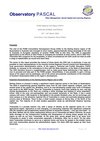Darling Downs, Australia
The region is the Darling Downs Region of which the city of Toowoomba is the largest city. Recently local government structures were changed in Queensland, from city/town/shire councils to Regional Councils. In many cases this involved an amalgamation of several town/shire councils. This occurred in the Darling Downs Region and was not well received by those in some of the smaller centres. They wanted to keep the old structure. Ironically the makeup of the new Regional Council has a greater representation of people from the smaller centres – many in the ‘Toowoomba city’ obviously tried to ensure that the smaller centres were well represented. The new council has been in place for approx 12 months now and there seems to be a growing resentment that the Toowoomba city is under-represented. This idea seems to be related to a belief that there is a lack of corporate experience on the new council in terms of managing an enterprise as large as the new council.
The new council embraces Toowoomba (an education centre with some agricultural manufacturing industries and a fairly strong business centre) and a number of smaller centres (Crows Nest, Cambooya, Clifton, Pittsworth, Millmerran – primarily agricultural centres although some have growing coal mining interests and an electricity power station.
It is important to understand the effect of this local government amalgamation. There is no apparent ‘glue’ which gives cohesion or purpose the region – not yet anyway.
Geography: a fairly large inland city (whose main industry is education) surrounded by a number of small rural towns whose existence is based upon agriculture and mining.
Demography: City – large number of people who are clients or suppliers of education; large number of retired people so many retirement villages, nursing homes. Country towns - numbers decreasing in rural pursuits as farms become larger and technology takes the place of workers, young people leaving these towns except in mining areas but global downturn has dealt a blow to those wanting to pursue work in this area.
Social structure: some immigrants (Sudanese) and indigenous people – some problems with integration.
Trends and changes: increasing number of aged people, lack of access to water and over-use of water for irrigation, more multi-cultural community (refugees and international students), conservation of areas being mined.
 Printer-friendly version
Printer-friendly version- 111 reads









